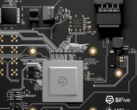Global Foundries was forced to limit its collaboration with AMD as its fabs could not be fitted with 7 nm nodes on schedule for the Zen 2 CPUs release. Even though the collaboration was not entirely ended, AMD now relies mostly on TSMC to produce the latest Ryzen 3000-series CPUs plus the Navi and Radeon VII GPUs. This has led Global Foundries to look into new avenues in order to stay relevant and make do with the limited resources it has.
One alternative to costly node shrinking that may help Global Foundries maintain its market presence is the adoption of high-density 3D chip manufacturing, which is currently more appropriate for the 12 nm nodes. Global Foundries is also looking to employ ARM’s mesh interconnect technology tuned for 3D planes.
Earlier this week, GF and ARM announced that they are already testing 3D chips built on the 12 nm FinFET process, and the use of 3D stacking enables improved scaling to higher number of cores that could benefit AI and machine learning applications for high-end consumer mobile and wireless solutions. Additionally the 3D designs allow for more efficient data transfers between cores, lowering the latency and increasing overall performance. The latest 3D Design-for-Test chips use GF’s hybrid wafer-to-wafer bonding technology, which can provide up to 1 million 3D connections per square millimeter. Such scalability should offer this manufacturing process a longer life span compared to traditional nodes.
As Moor’s Law is clearly not applying to node shrinking the way it used to in the early 2000s, other leading companies including Intel and AMD are considering alternative manufacturing processes. Intel expressed interest in 3D stacking for its upcoming CPUs, while AMD is considering adding DRAM and SRAM directly on the CPU die in a similar manner. 3D stacking has also been employed by Toshiba in its flash NAND chips for SSDs for a few years now.
I first stepped into the wondrous IT&C world when I was around seven years old. I was instantly fascinated by computerized graphics, whether they were from games or 3D applications like 3D Max. I'm also an avid reader of science fiction, an astrophysics aficionado, and a crypto geek. I started writing PC-related articles for Softpedia and a few blogs back in 2006. I joined the Notebookcheck team in the summer of 2017 and am currently a senior tech writer mostly covering processor, GPU, and laptop news.
> Expert Reviews and News on Laptops, Smartphones and Tech Innovations > News > News Archive > Newsarchive 2019 08 > Global Foundries and ARM working on high-density 3D chips
Bogdan Solca, 2019-08- 9 (Update: 2019-08- 9)


 Deutsch
Deutsch English
English Español
Español Français
Français Italiano
Italiano Nederlands
Nederlands Polski
Polski Português
Português Русский
Русский Türkçe
Türkçe Svenska
Svenska Chinese
Chinese Magyar
Magyar







